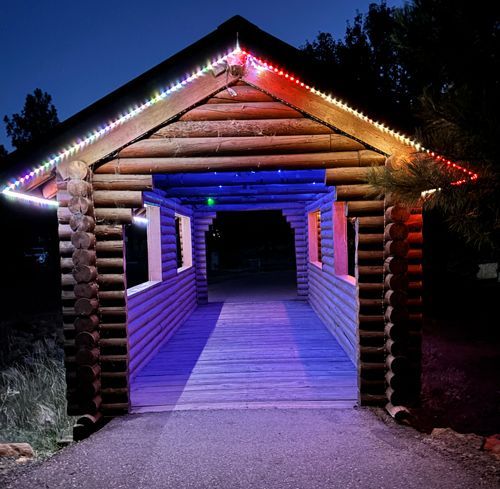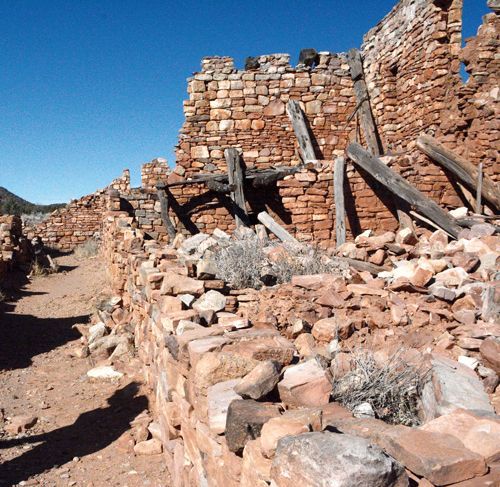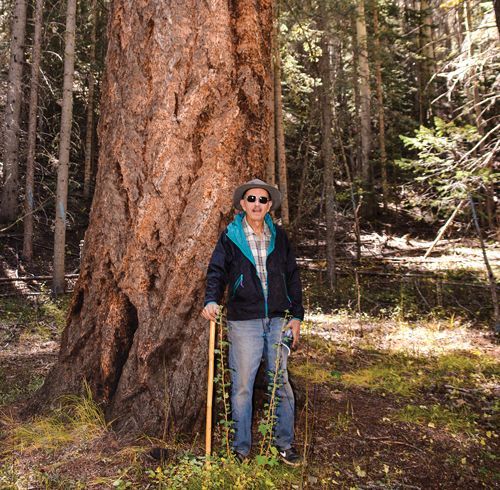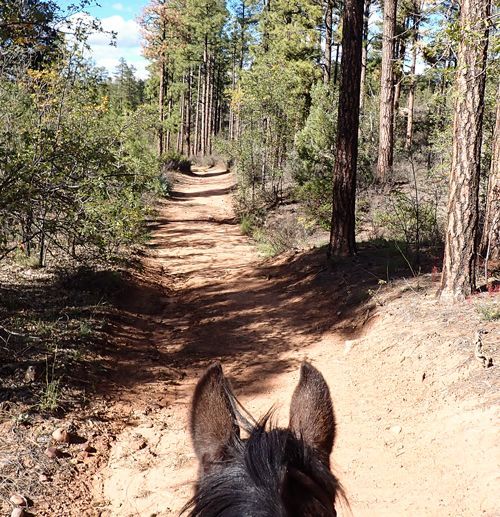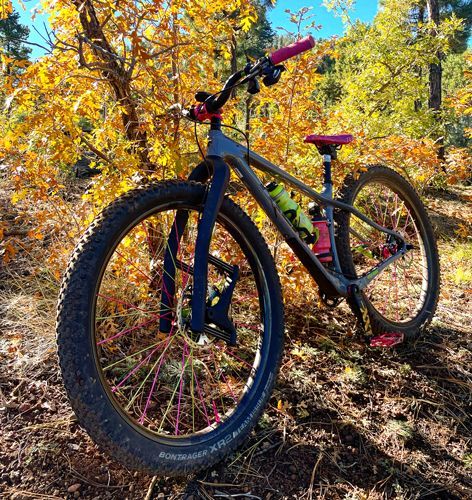Finding lost wanderers
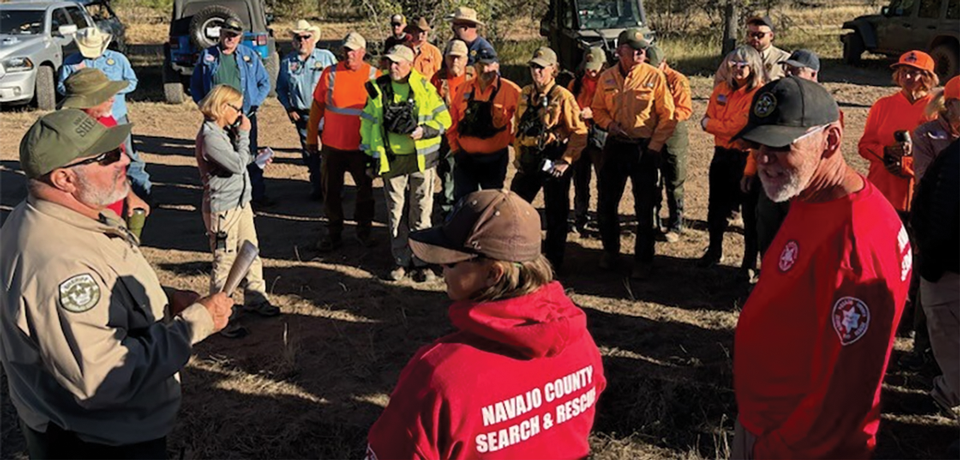
By Dan Groebner
It can happen in just minutes. One moment your loved one is with you shopping or having coffee on the back porch, and the next moment they disappear. Youngsters and people affected by dementia or severe autism and other at-risk individuals all can take off wandering at almost any time and keep wandering for hours and hours.
If you have felt the panic after realizing your dog got loose from the backyard, can you imagine the feeling if a family member or close friend with cognitive issues just disappeared?
In more urban settings, these folks are often reported by good Samaritans or the more prevalent law enforcement officers. It’s hard to wander in too many places of the Valley without being seen by somebody, but it can still happen.
However, up here in the more remote White Mountain area, it doesn’t take long to wander from even some of the most urbanized settings, and before long we are out on the trails dodging elk pellets and listening to a howling coyote chorus.
We are also blessed with an abundance of outdoor recreational activities including camping, hunting and hiking that is usually a healthy activity for everybody, especially the elderly. On top of that, our weather can turn on a dime from a nice sunny warm day to a frigid, rainy and windy evening. So we live in an area with unique risks that need to be considered immediately when looking for lost people.
But are most of these folks just “wandering?” That may be the most convenient way for us to describe their movements, but it turns out that many people have a reason in their minds for taking off, it just may not make sense to us.
For instance, they might want to go looking for someone significant in their past or a place that fits that description. They might want to go do something like getting something to eat or buying something else. Some people talk about doing something like this before they actually embark, so by paying attention to even possibly meaningless chatter, it may provide clues on where to search.
Unfortunately, some folks may actually want to get away from where they currently are because they feel anxious and very uncomfortable, and they may even avoid people looking for them.
The best way to avoid a crisis situation is obviously trying to prevent it in the first place. Some homes and yards can be secured with fences, locks, and alarms, but these need to be maintained and turned off and on, which can be too much for some caregivers. Motion detecting cameras on all doors can at least give you a time and direction of travel possibly but that doesn’t prevent the situation.
If the person is still allowed to drive, and the vehicle is available, there are still precautions that can be taken. OnStar and other companies provide satellite GPS tracking of vehicles, even with the ability to shut down the car engine remotely. Most people don’t want to give up their freedom to drive voluntarily, so taking the keys or hiding them could be difficult to do for some folks. And don’t forget about the golf cart or riding lawn mower!
Many law enforcement agencies maintain a database of people at risk with basic information such as photos, contact numbers, medical alerts and other pertinent information. But this information is good only if it is current, so family and caregivers must constantly update this with recent photos and contact numbers. Since it is difficult to make everybody carry a wallet or purse with them all the time with identification, it may be a good idea to get a bracelet or anklet that is difficult to remove and contains this same information.
What should you do if someone wanders way?
It always depends on the situation and must consider the health of the person, the location, how long they could have been missing, any nearby hazards, missing vehicles, mindset of the missing person, and the time it will take resources to help with a search.
When family members or friends first notice someone missing, they should spend about 15-30 minutes doing what professional searchers call a “hasty” search. This doesn’t mean the initial search is done recklessly without any plan, but rather the search quickly looks in the most obvious or dangerous places the person could be. This includes the house in places where a child might hide when playing “hide and seek,” like attics, crawlspaces, outbuildings, vehicles, culverts, and under porches. If people are available, have them look in the same places a second or third time.
Depending on the situation again, you can search the immediate area as well as the neighbor’s, with their permission if possible. It’s always good to get to know your neighbors so informing them of the possibility of a wandering type of person covers a couple of bases, especially if the wandering person is non-violent and at severe risk.
If you are in a “big box” store, the best thing to do is to inform the customer service manager immediately so they can inform their associates on the floor and at the doors to be on the lookout. If the store can cover all the doors and maintain containment, that allows you to search the isles. Having a recent photo and clothes description will certainly make things much easier and more likely to be successful.
But if you can’t locate the person immediately, call 911 right away, especially if you are in a remote area, since the response time will take a lot longer. Even if you are not in a remote area, calling quickly helps searchers narrow down the area that they need to search and greatly increases the chances of finding the individual.
Fortunately, there are a range of new solutions that can help with keeping track of people who are at risk of this type of wandering. If the subject carries a cell phone, there are many apps that allow caregivers to keep track of others and emit alarms if they travel outside of certain boundaries, for example.
The “Find My” app that is automatically installed on iPhones and the “Location Sharing” option in Google Maps offer lots of flexibility from schedules to advanced features such as the electronic enclosures, called “geofences.” These features, as well as other more advanced paid options with companies that specialize in this service, usually require cell phone service coverage. Although this coverage continues to expand on the mountain and along the rim, there are still many voids without coverage where these phone apps and others would not work.
Technology for locating individuals that operates in areas without a cell phone signal includes mostly VHF or satellite frequency radio tracking. This solution is like wildlife radio tracking by using a transmitter that looks like a smartwatch, bracelet or anklet. Since this equipment is more complex and requires battery changes and maybe a monthly subscription fee, there are companies dedicated solely to this service. Currently, the volunteer Navajo County Search and Rescue posse is considering getting involved with one of these programs due to the increasing rate of search and rescue call outs for these scenarios. You can contact the Navajo County Sheriff’s Office at 928-524-4050 or www.navajocountyaz.gov if you want to become involved by either supporting this type of program or if you are interested in trying to safeguard a friend or family member. The program being considered requires funding for equipment and training and is currently being used successfully in Gila County.
Even if you aren’t enrolled in any programs, you shouldn’t hesitate to call your local Sheriff’s department as soon as possible if someone goes missing. This gives them time to quickly mobilize ground crews, Department of Public Service infrared capable helicopters, and Civil Air Patrol airplanes with high-definition cameras.
And for those of us with most of our facilities still intact for the time being, we still need to tell people where we are going hiking and when we plan to return! Happy Hiking!!

